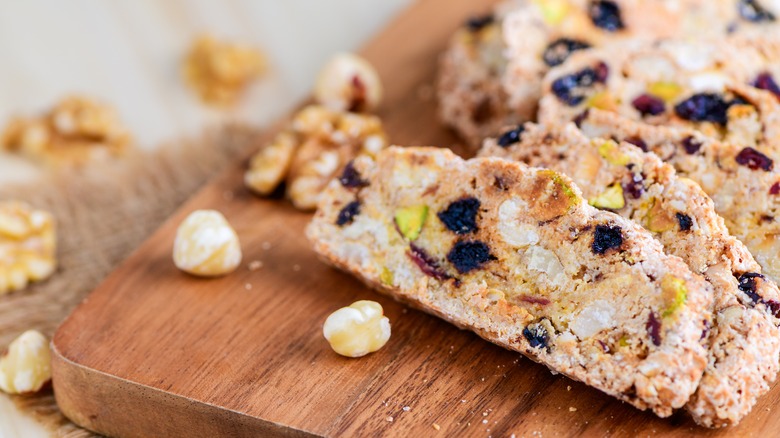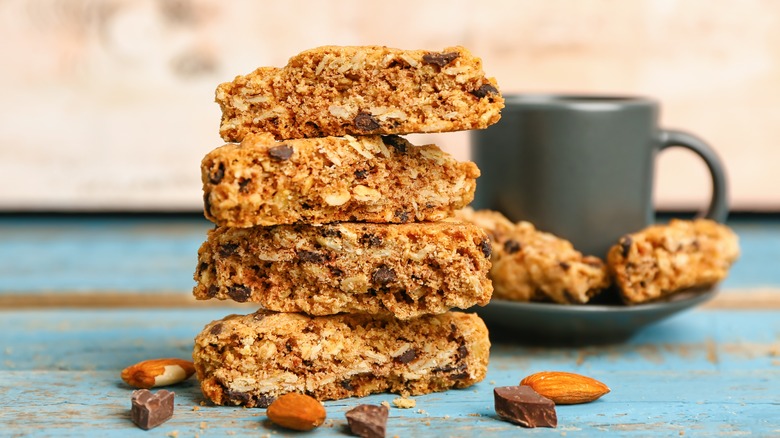When Making Biscotti, Work With Damp Hands To Combat Sticky Dough
Home bakers know how making biscotti, the twice-baked Italian cookie, can sometimes be a difficult albeit rewarding endeavor. One of the challenging aspects is managing the sticky biscotti dough. However, a simple yet effective technique to approach this issue is wetting your hands. Slightly damp hands will make working with and molding the sticky dough easier.
Why is biscotti dough so sticky? The reason is its high moisture content, room temperature components like eggs and butter, and the inclusion of ingredients like honey and molasses. But biscotti is meant to be sticky. This stickiness helps you bake up crispy, crunchy biscotti versus hard ones. For this same reason, you may want to avoid combatting the stickiness by adding more flour or overchilling the dough.
When you're ready to mold and shape sticky biscotti dough, wash your hands and then keep them damp. You'll see that the dough won't stick to your hands and fingers as much, and it'll be easier to form the dough into your desired shapes on the baking sheet. If the dough does end up sticking on your hands, simply rinse them and keep them wet.
Embrace sticky biscotti dough as it's a sign for crispy and crunch cookies to come
Home bakers love tips and tricks, so here's another effective method for you to keep sticky dough from sticking to your hands: Lightly grease them with neutral oil. The oil will act as a barrier between your skin and the dough, making the shaping process more manageable.
Now let's say the dough clings to the sides of your stand mixer bowl or mixing bowl, or gets caught in the stand mixer paddle. What do you do then? Instead of scraping the dough off with your nails, tools like a bench scraper or a spatula can be invaluable. A bench scraper can help scoop out dough and cut through it; a spatula can remove pesty dough clinging onto the paddle or bowl, ensuring every bit of dough can be incorporated back into the final mix.
So, next time you set out to make biscotti, remember to embrace its sticky nature. It's a baking badge of honor, a sign of a well-crafted biscotti dough and delicious, crispy cookies to come. Just be sure to wet your hands or lightly grease them first before working with the sticky dough, and use baking tools as needed. No matter how sticky the biscotti dough is, you'll be ready for it.

